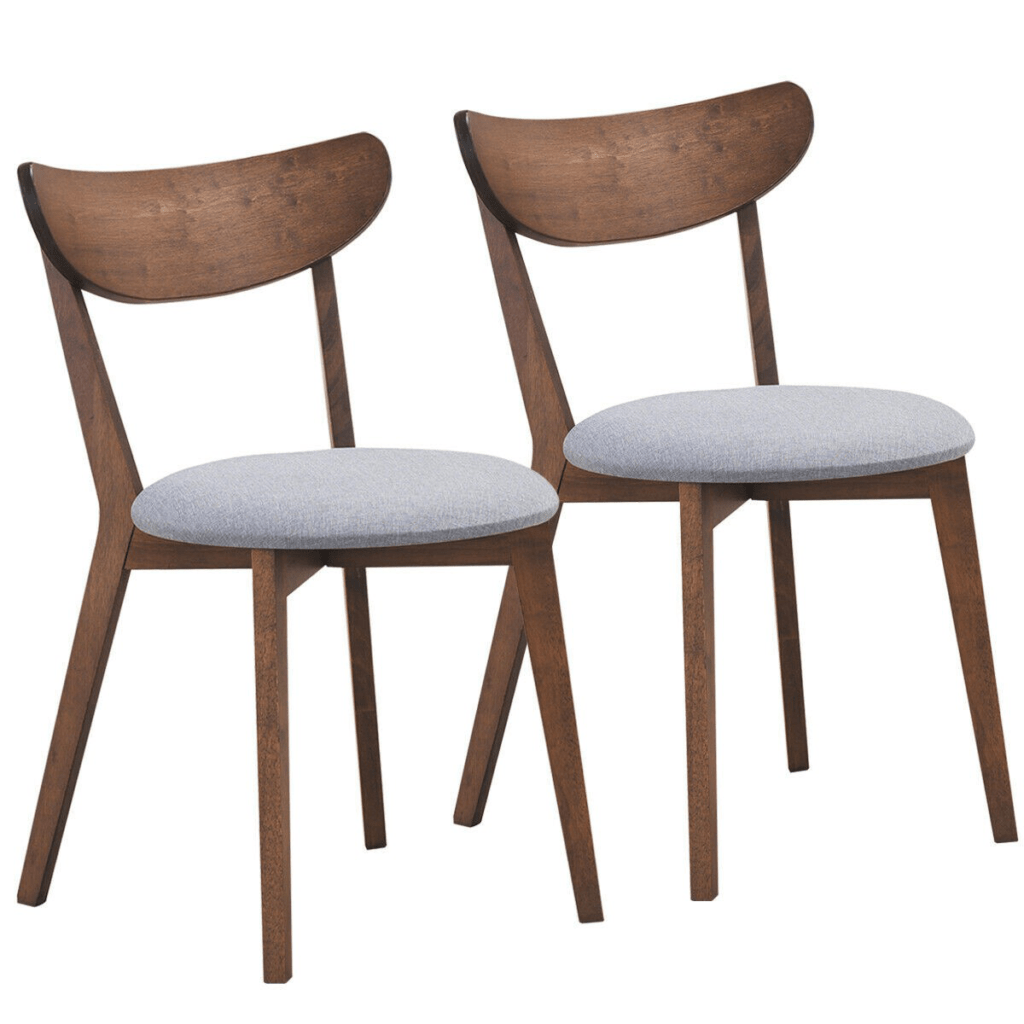Wishbone Chair Design and History: Wishbone Dining Chair White

The Wishbone chair, with its iconic Y-shaped backrest and woven seat, is a timeless design that has captured the hearts of design enthusiasts for decades. It is a testament to the enduring legacy of Danish design and the genius of its creator, Hans J. Wegner.
Origins and Connection to Danish Design
The Wishbone chair, originally named the “CH24,” was designed by Hans J. Wegner in 1949. It was part of a series of chairs that Wegner created for the Carl Hansen & Son furniture company. The chair embodies the core principles of Danish design, emphasizing functionality, simplicity, and craftsmanship.
Danish design, which emerged in the mid-20th century, is characterized by its minimalist aesthetic, use of natural materials, and focus on human-centered design. The Wishbone chair perfectly embodies these principles. Its clean lines, elegant form, and comfortable design make it a timeless piece that transcends trends.
Unique Features of the Wishbone Chair
The Wishbone chair is renowned for its distinctive features:
- Y-shaped backrest: This iconic feature provides excellent back support and a sense of openness. The backrest is crafted from a single piece of wood, showcasing Wegner’s mastery of woodworking.
- Woven paper cord seat: The seat is made from a natural paper cord that is hand-woven onto the chair’s frame. This technique creates a flexible and comfortable seat that conforms to the user’s body.
- Solid wood construction: The chair is made from solid wood, typically beech or oak, which gives it durability and a warm, natural feel. The wood is carefully selected and treated to ensure its longevity.
- Simple and elegant design: The Wishbone chair’s design is both simple and elegant. It is free from unnecessary embellishments, allowing the natural beauty of the wood and the craftsmanship to shine through.
Evolution of the Wishbone Chair
Over the years, the Wishbone chair has undergone some variations in materials and finishes. While the original design remains unchanged, the chair has been produced in different wood types, such as walnut and cherry. The paper cord seat has also been available in various colors, adding a touch of personalization to the design.
The Wishbone chair has also been adapted for different purposes. A smaller version, the “CH25,” was created for children, while a wider version, the “CH26,” was designed for dining.
The Wishbone chair continues to be a popular choice for both residential and commercial spaces. Its timeless design and exceptional craftsmanship make it a cherished piece that is sure to be enjoyed for generations to come.
Practical Considerations for the Wishbone Dining Chair in White

The Wishbone chair, with its elegant design and timeless appeal, is a popular choice for dining rooms. However, opting for a white finish introduces a unique set of considerations regarding durability, maintenance, and potential discoloration.
Durability and Maintenance of a White Wishbone Chair, Wishbone dining chair white
The white finish, while aesthetically pleasing, requires more attention to maintain its pristine appearance. The chair’s frame, crafted from solid wood, is generally robust and durable. However, the white paint or lacquer applied to the wood can be susceptible to scratches, scuffs, and stains. Regular cleaning and proper care are essential to preserve the chair’s beauty.
Cleaning and Protecting the White Wishbone Chair from Stains and Scratches
- Regular Dusting: Frequent dusting with a soft, dry cloth helps prevent dust buildup, which can dull the finish and make cleaning more difficult.
- Spot Cleaning: For spills or stains, use a damp cloth with mild soap and water. Avoid harsh chemicals or abrasive cleaners that can damage the finish. Gently blot the stain, avoiding rubbing, and allow the chair to air dry completely.
- Protective Measures: Consider using furniture polish or wax specifically designed for painted wood to create a protective layer. This can help resist scratches and enhance the finish’s shine.
- Placement and Use: Placing the chair in an area with low traffic and avoiding sharp objects can help minimize the risk of scratches. Consider using protective pads or coasters under plates and glasses to prevent stains and marks.
Potential for Discoloration or Yellowing Over Time
White paint or lacquer can be susceptible to yellowing over time, especially when exposed to prolonged sunlight or heat. This discoloration is a natural process that occurs due to the breakdown of the paint’s pigment molecules.
- Sunlight Exposure: Minimize direct sunlight exposure to the chair. Consider using curtains or blinds to filter sunlight or repositioning the chair away from windows.
- Heat Sources: Keep the chair away from heat sources like radiators or fireplaces, which can accelerate yellowing.
- Regular Cleaning: Regular cleaning helps remove dust and grime that can contribute to discoloration.
The wishbone dining chair white, with its iconic design, offers a timeless elegance that can enhance any dining space. However, the chair’s minimalist construction can sometimes lack comfort. To address this, consider adding etsy dining chair pads for a personalized touch.
These pads, available in a vast array of styles and materials, can transform the wishbone chair into a haven of comfort and style, enhancing the overall dining experience.
The wishbone dining chair white, with its iconic Y-shaped backrest, is a classic design that evokes a sense of both elegance and comfort. For those seeking a contemporary alternative, the phinnaeus fabric dining chair by christopher knight home offers a modern take on the traditional dining chair, featuring clean lines and a plush fabric upholstery.
Both chairs are suitable for a variety of dining room styles, providing comfort and style for everyday use.
